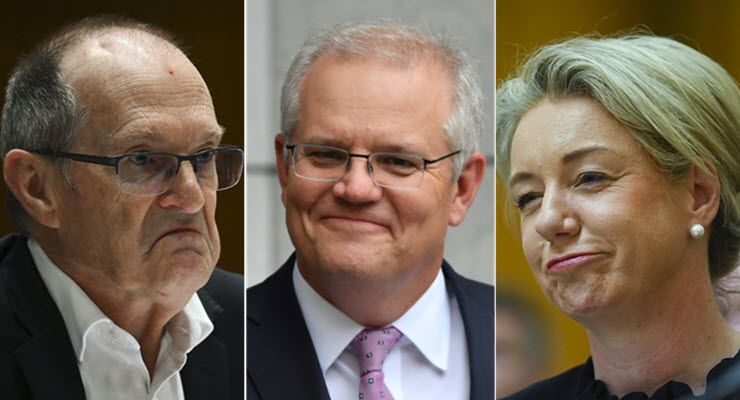
Over the past few weeks, we’ve been putting together an oral history reconstruction of the sports rorts affair, which you can read here. And if there’s one thing that shines through, it’s that nobody is willing to accept any responsibility or answer any questions about the matter.
From the start, Prime Minister Scott Morrison has maintained there was nothing to see here, and if there was well, that was then-sports minister Bridget McKenzie’s fault.
McKenzie herself has been largely MIA. Initially denying any wrongdoing, she resigned over a gun club membership and has appeared to blame funding decisions on her staff, while also failing to front up to the Senate inquiry.
Department of Prime Minister and Cabinet (PM&C) secretary Phil Gaetjens, to his credit, did show up the inquiry. But when questioned about the methodology behind his report into the affair, and his past ties to Morrison, gave us monosyllables.
We asked detailed questions of the three. In response, PM&C told us Gaetjens had “made extensive public comment on this issue to the Senate Select Committee on Administration of Sports Grants”. It referred us to his submission and appearance at the inquiry.
These are the questions we asked, to which we have not received an answer.
Bridget McKenzie
- Did the senator overrule Sport Australia’s recommendations and conduct a parallel decision-making process that favoured marginal seats and Coalition target seats?
- Senator McKenzie initially referred to the sports grants program as a case of “reverse pork-barrelling”. This seems inconsistent with the Australian National Audit Office (ANAO) findings that marginal seats were favoured. Did the ANAO make the wrong conclusion, and if so, how?
- On March 6, the senator responded to evidence changes were made to the grant list after the election was called by denying she was responsible. Her statement says “changes were made and administrative errors occurred in processing the brief”. Who was responsible for those changes and errors?
- Following from the above question, were staffers signing off on grants without the senator’s approval?
- Legal experts said the grants process may have been both unconstitutional and in excess of the then-minister’s legal authority. Do you agree with this conclusion, and was any legal advice sought during the decision-making process?
- Why has Senator McKenzie not appeared before the Senate inquiry? Will she be appearing by February following the recent motion?
Scott Morrison
- What role, if any, did the prime minister’s office play in administering the sports grants?
- The prime minister has repeatedly said the former sports minister’s office was in charge of the grants process. How does this account for the 136 emails relating to the grants between the Prime Minister’s Office (PMO) and McKenzie’s office?
- Legal experts told the Senate inquiry the sports grants scheme was potentially both unconstitutional, and that the minister may have acted beyond her authority. Do you agree with this assessment?
- The prime minister has previously said political considerations were not a determining factor in how the grants were allocated. Does this mean the ANAO’s conclusions were incorrect?
- Sources raised concerns about Phil Gaetjens, Morrison’s former chief of staff, reviewing the program. Are those concerns valid?
- Why hasn’t Gaetjens’ report been publicly released?
Phil Gaetjens
- Phil Gaetjens previously worked as Scott Morrison’s chief of staff. Some sources told us they felt this created an apprehension of bias. Was it appropriate for Gaetjens to conduct this review given his prior relationship with the prime minister?
- Why wasn’t Gaetjens’ final report released?
- The report reaches a different conclusion to the ANAO on whether funding was unduly influenced by an applicant’s location in a marginal seat. How did these two different conclusions get reached? Does this mean the ANAO’s conclusions are incorrect?
- According to Labor senators, the review involved a different methodology to the ANAO, and involved only one interview and phone call. Are the conclusions presented still valid?








Were those “changes (that) were made and administrative errors (that) occurred in processing the brief” done in another, “higher” office?
We may have to wait for regime change to find the answers.
This government is more intent on giving big business and airlines billions before it will give a single dollar to the workers or unemployed, this is a government of the rich for the rich and by the rich and yet over 50% of these victims will continue to vote for them, that`s the mystery.